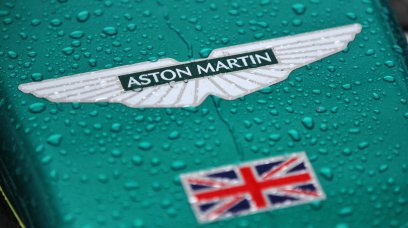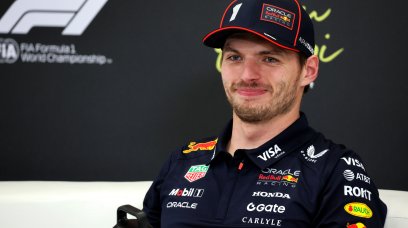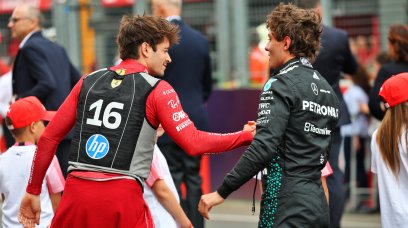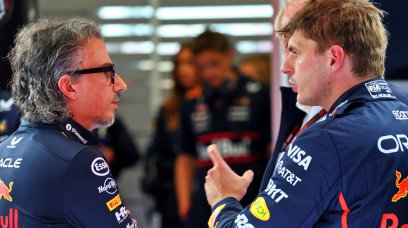Ferrari team boss Mattia Binotto has explained how his team were able to foresee issues with 'porpoising' - i.e. the car bouncing at high speeds - during the design process of the F1-75. A move to a ground effect aerodynamic philosophy under the new rules for 2022, away from over-body downforce generation, has resulted in a curious phenomenon arising in pre-season testing. All of the cars could be seen bouncing their way down the straights at high speed, an uncomfortable consequence caused by the stalling of airflow underneath the floors of the cars. Many of the teams managed to largely negate the side effect over the course of the six days of testing, with Ferrari notably improving between the Barcelona and Bahrain test. Binotto explained that the effect could have come as a shock to them, given the simulator doesn't allow for such side effects to be replicated, but the team had predicted the issue coming to the fore. "It is a behaviour that occurs for this type of aerodynamic concept, and for this type of [floor]," Binotto told select members of the media, including RacingNews365.com . "None of the teams had foreseen it or given it the necessary importance. It was not possible to simulate it at home because, on the track, it occurs at over 250-270 kilometres an hour. In the wind tunnel, we are limited to 180 kilometres an hour by regulation. Therefore, the speed necessary to recreate it was not reached."
Ferrari had solutions prepared in advance
Binotto went on to explain that Ferrari had suspected such issues might arise, and revealed they had parts ready to be fitted for the second day of testing in Barcelona – now a source of pride for the team. "We had imagined something on our part, so much so that we had some solutions to try to stem it – we had [them] ready for the second day in Barcelona," he explained. "This is part of the concept of satisfaction with the preparation carried out. The team was able to anticipate and react. "Today, the problem is largely solved: some solutions have been identical for all the teams, such as being able to add a tie rod to the bottom - which is not yet allowed by the regulation - but will be added with the agreement of all the teams and the FIA. With a meeting of the World Motor Sport Council scheduled for Friday, Binotto said the solution will likely be formally approved for the Bahrain weekend. "It will probably be ratified on Friday," he went on to comment. "By stiffening the bottom on the rear, the tie rod is helping us to largely solve the problem, together with the other solutions we have brought, allowing us to return to the heights from the ground that we believe are right and correct" But the Ferrari boss warned it's not certain that the solutions found will apply for every track on the calendar. "However, it is not certain that the problem will be solved on all tracks – it is still too early to say," he said. "We are working and simulating at home, also studying other solutions in addition to the already existing ones. The hope is to have solved it after a maximum of four to five races."
Most read







